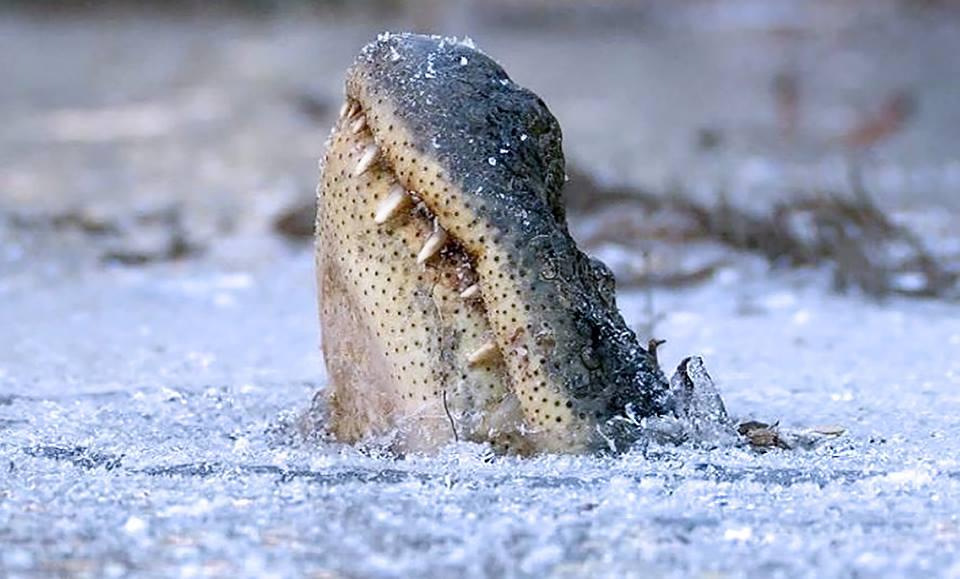Alligators in a North Carolina swamp have once again been caught on film allowing their snouts to get frozen into the water just as it dips below freezing.
Last year, the alligators at the swamp park displayed the same behavior, picking up interest around the world with the rarely seen winter survival strategy that allows them to keep breathing for days in the ice.





